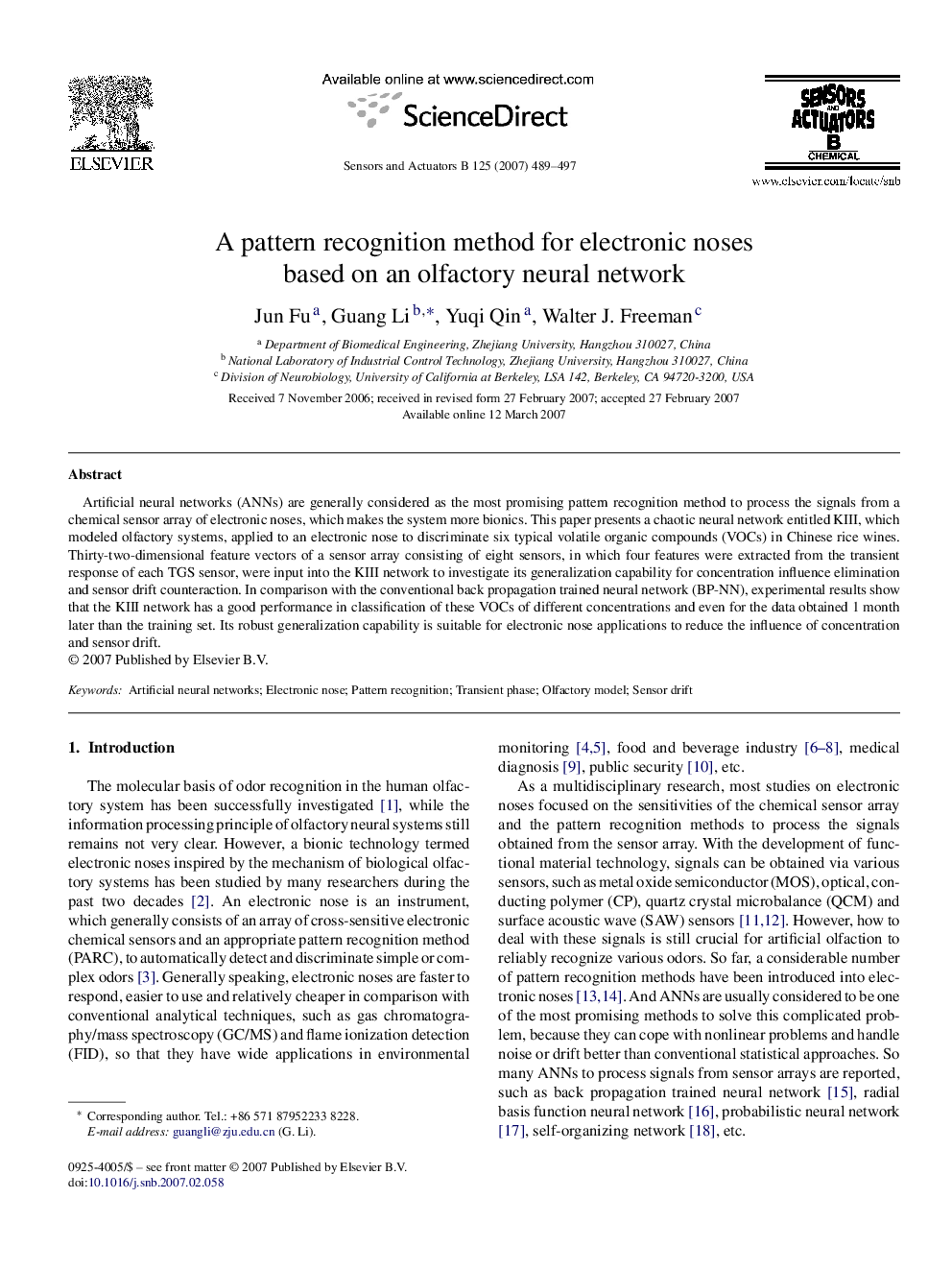| Article ID | Journal | Published Year | Pages | File Type |
|---|---|---|---|---|
| 746832 | Sensors and Actuators B: Chemical | 2007 | 9 Pages |
Artificial neural networks (ANNs) are generally considered as the most promising pattern recognition method to process the signals from a chemical sensor array of electronic noses, which makes the system more bionics. This paper presents a chaotic neural network entitled KIII, which modeled olfactory systems, applied to an electronic nose to discriminate six typical volatile organic compounds (VOCs) in Chinese rice wines. Thirty-two-dimensional feature vectors of a sensor array consisting of eight sensors, in which four features were extracted from the transient response of each TGS sensor, were input into the KIII network to investigate its generalization capability for concentration influence elimination and sensor drift counteraction. In comparison with the conventional back propagation trained neural network (BP-NN), experimental results show that the KIII network has a good performance in classification of these VOCs of different concentrations and even for the data obtained 1 month later than the training set. Its robust generalization capability is suitable for electronic nose applications to reduce the influence of concentration and sensor drift.
